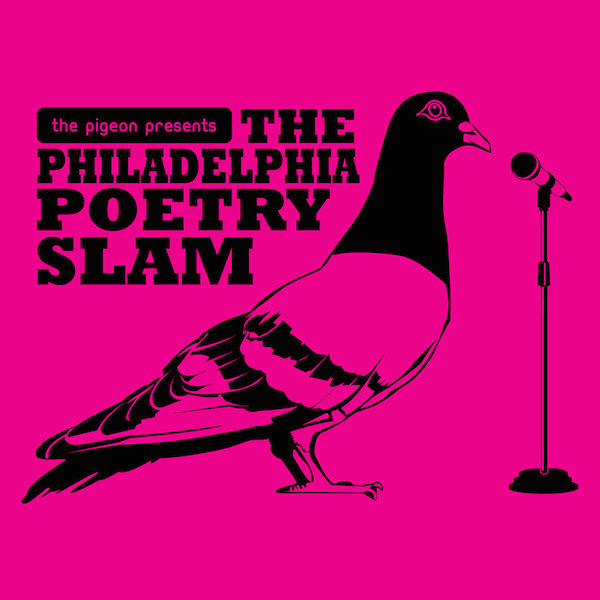
Teaching artists and Philadelphia’s economy
By Jacob Winterstein, The Philadelphia Poetry Slam
A year and a half ago I decided to leave my full-time salaried position as a Development Director at a great non-profit to try and turn my part time passions into a full time living. I wanted to write and perform more poetry, use our Knight grant to expand The Pigeon Presents: The Philadelphia Poetry Slam, organize more events and teach more poetry and freestyle rapping.
I was lucky enough to find work with Josh Robinson an experienced teaching artist and percussionist. With over ten years under his belt as a fulltime teaching artist and performer Josh taught me invaluable lessons about how to make being a teaching artist emotionally and financially sustainable work.
He implored me to think about the big picture and remember that I am managing my contracts and accounting, paying to have my website built, going to and paying for professional development on my time, buying supplies, consistently honing my craft and not working a predictable schedule. In addition to teaching me classroom activities and skills, he taught me the framework and values I need to become a professional teaching artist who hopefully is able to do this work for a long time.
Around the same time I started to have conversations with other artists who teach and realized that there is a lot of mystery and disparity around how much people get paid. For many artists, we love and enjoy what we do so much that we have difficulty thinking about our work as worthy of wages that sustain our lives. Without Josh, I don’t how long it would have taken me to figure out where to start in terms of pay.
After taking several phenomenal professional development workshops for teaching artists at the Bartol Foundation I asked them if they would survey independent contract teaching artists in Philadelphia to find out how much they get paid and what factors they consider when taking a gig. The survey wasn’t written to be a scientific assessment of the field. Instead it was written for teaching artists to use as a guideline when negotiating gigs. I think the survey also got many teaching artists to think about their work beyond themselves as individuals and more as a part of a larger field. 354 independent teaching artists filled out the survey.
The average pay for teaching artists doing a one-time, less than ten day or more than ten-day program is roughly $40 an hour before taxes and expenses. In addition to reporting their average pay, teaching artists were asked what is the lowest and highest hourly rate they’ve accepted in the last year, things they consider when deciding to accept a gig and their discipline. You can read the results of the survey here.
Independent, contract, teaching artist work is an important component of creating an economically healthy arts-ecosystem in Philadelphia. Teaching artist work allows artists to create flexible schedules so they can practice, create and tour their work. Ideally, higher hourly wages than non-professional work, allow teaching-artists to “buy time” during which they can expand their artistic and pedagogical practice.
Independent contract work can be isolating. In this isolation we miss opportunities to set minimum standards, strategize and collaborate. We hone the skills needed to survive in this current economic environment but never get around to working together to create a better one.
There are some great people and organizations bringing artists together to use our collective wisdom, experiences and resources to create better working conditions. The Bartol Foundation does great work in bringing teaching artists together to do professional development. Knight Grantee Erica Hawthorne and her fellow volunteers at Small But Mighty Arts are pooling and investing money in individual artists while connecting them to important resources. Fellow Knight Grantee Andrew Simonet and his phenomenal team at Artists U are bringing artists together to “build lives that are balanced, productive, and sustainable”. Working Artists and the Greater Economy (WAGE) out of New York City has created a certification “that publicly recognizes non-profit arts organizations demonstrating a history of, and commitment to, voluntarily paying artist fees that meet a minimum payment standard.”
Philadelphia teaching artists would benefit greatly from a standard such as the one set by the Artists in Education Consortium (AIE) of the New Jersey Council for the Arts ($275 for a three-hour day = $91.66/hr). It would take increased government funding, more financial support from foundations, a reorganization of priorities within local institutions and arts organizations and the further professionalization of teaching artists to make this rate standard in Philadelphia.
The larger picture that we work within is that the economy in Philadelphia doesn’t work for hundreds of thousands of people. Over 400,000 people in Philadelphia, many of whom are artists like myself, live under the federal poverty line. I hope that artists, foundations, government, institutions and organizations in Philadelphia will not use the arts as the engine of an economy of which our neighbors and we cannot afford to be a part. Instead I hope that together we figure out a way to use the arts to create a city that brings meaning, beauty, joy and sustainable work to all.
I encourage individual artists to find ways to connect with people and organizations that are working to improve the living conditions for people in this city. I encourage you to set a minimum standard for yourself and be clear and confident about the value of your work.
Art brings incredible meaning and skills to people. As we teach and prepare our students for the future, let us also lay the groundwork for them to be able to find meaningful, gratifying and financially sustainable work.
Recent Content
-
Artsarticle ·
-
Artsarticle ·
-
Artsarticle ·

